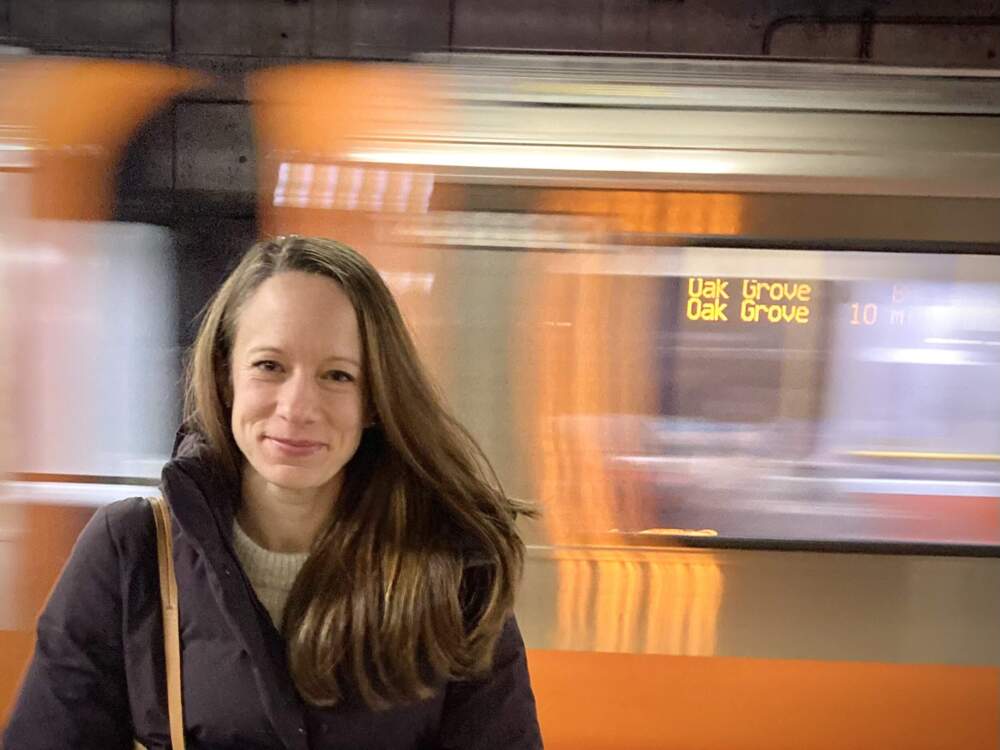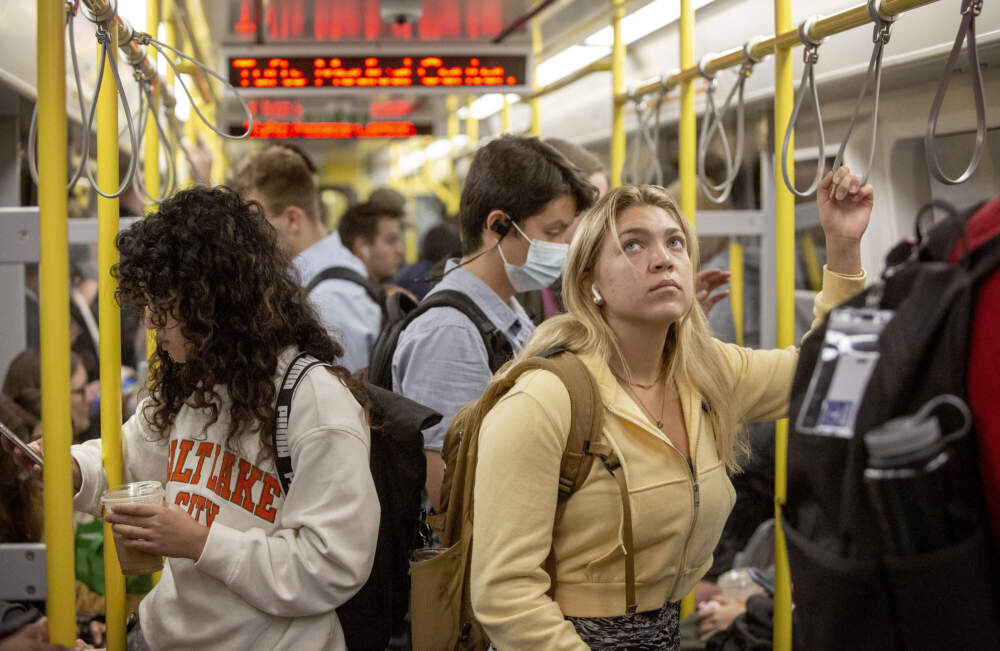Advertisement
Commentary
I love you anyway, MBTA

It was 8:35 a.m. on a Tuesday. The doors of the Orange Line car I was sitting in were open and beeping.
A man sprinted down the stairs toward the platform — his backpack slipping off one shoulder, CharlieCard and wallet still in hand, trying to make his legs go faster than anyone’s legs can go when stairs are involved. I’ve been in his situation before. It’s why my heart quickens each time I walk into the station. I hope that I won’t hear the beeping, but know that if I do, I’ll be tempted to run for the train, no matter how futile the effort.
On this particular Tuesday, the man was still a few paces away from the train doors when they started beeping faster — the sign that they are about to close — and he made a dash for it. But this last-second burst of speed occurred just as he reached the uneven red bricks outside the yellow line and he tripped, his body falling sideways just outside of the doors. Meanwhile, his wallet flew into the train car: His credit cards, CharlieCard and IDs ejected themselves and flew like frisbees in every direction.
We, the inhabitants of that car, watched this event over our phones and books, coffees and donuts. And then the three of us nearest the doors, collectively and separately, without a word or even a glance, decided our roles.
I ran up and slid my foot between the doors, holding them open. An older man who had been sitting to the left of me helped the man who had fallen get up while a woman in hospital scrubs collected the contents of the wallet from other passengers. Then we waited, my foot holding firm as the beeping doors got angrier and angrier at me for deterring their mission, while the man counted his cards to make sure none were still on the platform or worse — in the abyss between the platform and the car.
“Do you have them all?” The woman in hospital scrubs asked. The man nodded yes.
Once he was on the train with his wallet (and dignity) intact, he thanked each of us with a quick glance and a nod. Our teamwork complete, we went back to what we had been doing: reading, eating, watching. I got off at the next stop.

In the five years I’ve lived in Boston I can remember more than a dozen times when a group of people worked together to help a stranger. Looking back at those moments, I’m struck by the fact that most of them occurred on public transportation.
We all know the T is in crisis. There has been a steady stream of shocking stories about underfunding, lack of safety protocols and, frankly, incompetence. Those of us who ride the T see it every day — the elevator at Ruggles that was broken for over a year, the rain coming through rusted-out I beams in the ceiling at Back Bay, the inch-thick dust on the pipes above the underpass at State Street.
We also hear a lot about the reasons we should fix the T: Mass transit is better for the environment, reduces road congestion and makes our city more accessible.
And while all of those reasons are important, if we only think about the T in terms of how it moves people around Boston, we overlook one of the greatest benefits of public transportation — how it helps us build a sense of community.
Advertisement
In his book "Palaces for the People," sociologist Eric Klinenberg talks about the importance of infrastructure that encourages people to come together: “Spending time on crowded train cars […] helps passengers learn to deal with difference, density, diversity, and other people’s needs. It fosters cooperation and trust.”
On the 66 bus, I learned that if you’re over the age of 80 and decide that the easiest way to get your groceries home from Trader Joe’s is to bring the full shopping cart on board with you, no fewer than six people will get off to help you lift the cart onto the bus. And then they’ll help you carry it off six stops later.
Once on a mid-day Orange Line train, I celebrated with a man who got word he was officially an electrician. “Happiest moment of my life,” he announced after pulling his phone away from his ear, “Now I have control of my own future. So that’s why I’m acting strange.”
My neighbor and I said congrats. Someone came from across the car to pat him on the back. Another shook his hand. I could see a tear forming in the corner of his eye.
Those who can afford it may use private vehicles to avoid wasting precious time on a Red Line car that sometimes moves slower than a pedestrian, but at what cost? Maybe something important happens when we choose to travel with our fellow Bostonians. Maybe in this age of increased polarization and decreased civic participation, an age of increased road deaths and social isolation, taking mass transit is a positive way we can all participate in public life.
When I decided to move to Boston after living in San Diego for a decade, people warned me that New Englanders can be cold. But that hasn’t been my experience. What I’ve found riding public transportation here is that each car becomes a community, if only for a few minutes.
Lifting up someone who is down, helping a neighbor carry a burden and celebrating another person's success are things we all need to do more of — even if that means it takes us longer to get where we’re going.
